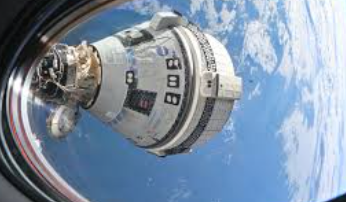The International Space Station (ISS) mission involving NASA astronauts Sunita Williams and Barry Wilmore has encountered significant challenges due to technical issues with the Boeing Starliner spacecraft. Initially set for an eight-day mission, the astronauts’ return has been postponed multiple times, primarily due to problems such as helium leaks, malfunctioning thrusters, and a faulty propellant valve.
Technical Troubles and Financial Implications
The Starliner has faced several technical setbacks, with thrusters overheating and essential helium leaks exacerbating the situation. These helium leaks are critical as they are used to pressurize the thrusters. The faulty propellant valve has further complicated the mission, delaying the astronauts’ return.
NASA is currently exploring various solutions to bring the astronauts back to Earth. While the Starliner is equipped to remain docked for up to 45 days, and backup systems can extend this period to 72 days, there is a potential contingency plan to use SpaceX’s Crew Dragon to return the astronauts. However, this option is seen as a last resort due to the significant financial implications for Boeing. The company has already faced considerable financial losses, estimated at $1.5 billion, from the Starliner program.
The Critical Nature of the Starliner Mission
The Starliner mission is crucial for NASA as it aims to provide a reliable alternative to SpaceX’s Crew Dragon for transporting crew to and from the ISS. Despite being awarded the contract in 2014, Boeing’s Starliner has encountered numerous setbacks, including launch delays caused by battery issues, flammable wiring, and parachute system malfunctions.
The Road Ahead
The current situation underscores the critical importance of resolving these technical issues promptly. The success of the Starliner mission is vital for NASA’s broader strategy of maintaining multiple avenues for crew transportation to and from the ISS. The ongoing challenges highlight the complexities and risks inherent in space missions, especially when they involve new technologies and systems.
NASA and Boeing are working tirelessly to resolve the issues and ensure the safe return of the astronauts. The situation remains dynamic, and updates are expected as the teams progress in their troubleshooting efforts.
Conclusion
The extended stay of astronauts Sunita Williams and Barry Wilmore on the ISS due to the technical issues with the Boeing Starliner has highlighted the mission’s critical nature and the significant financial stakes involved. As NASA explores various solutions, including the potential use of SpaceX’s Crew Dragon as a last resort, the situation underscores the complexities and risks inherent in space missions. The success of the Starliner mission is crucial for NASA’s broader strategy, and the ongoing efforts to resolve the issues are vital for the future of space exploration.








